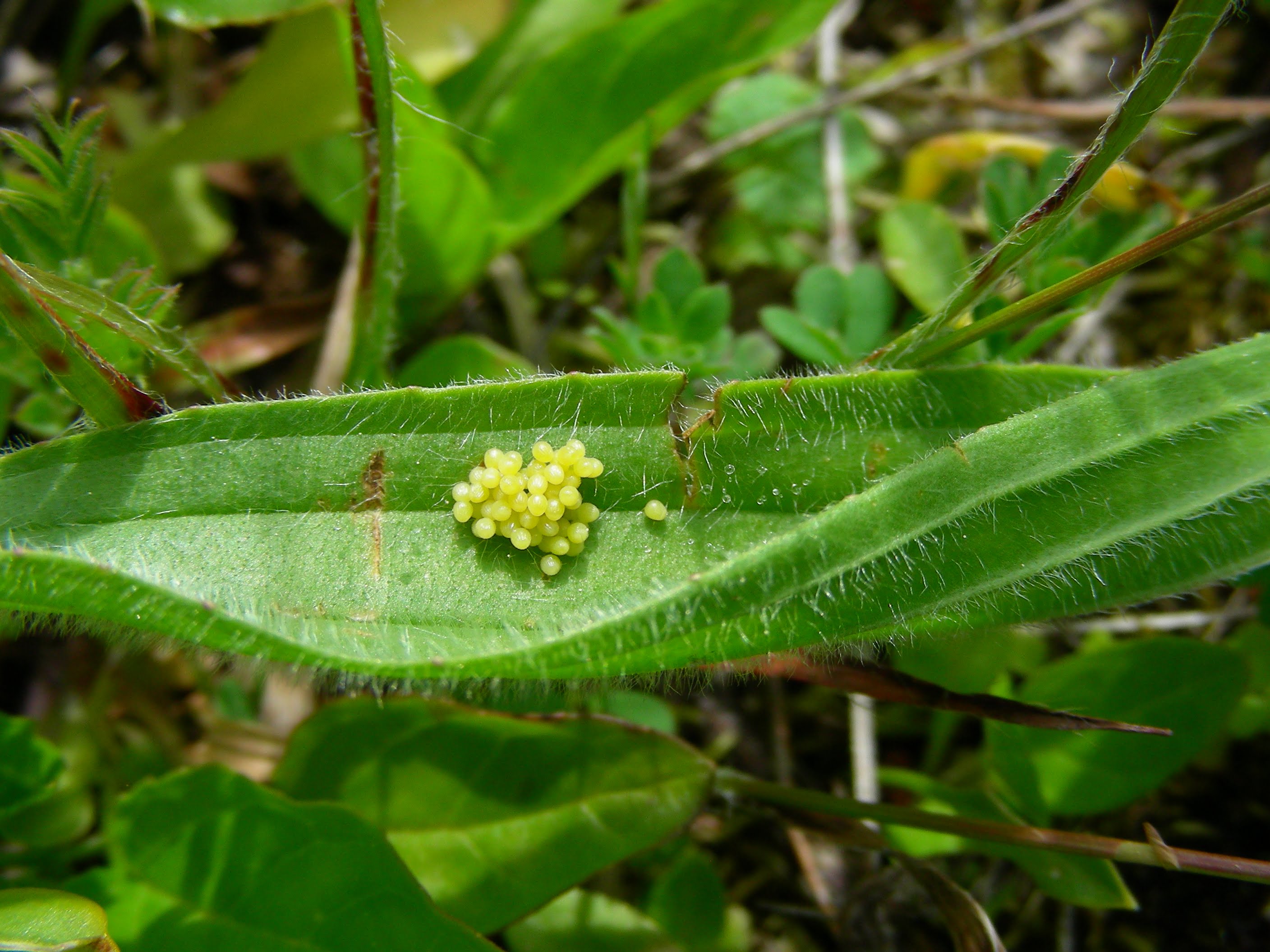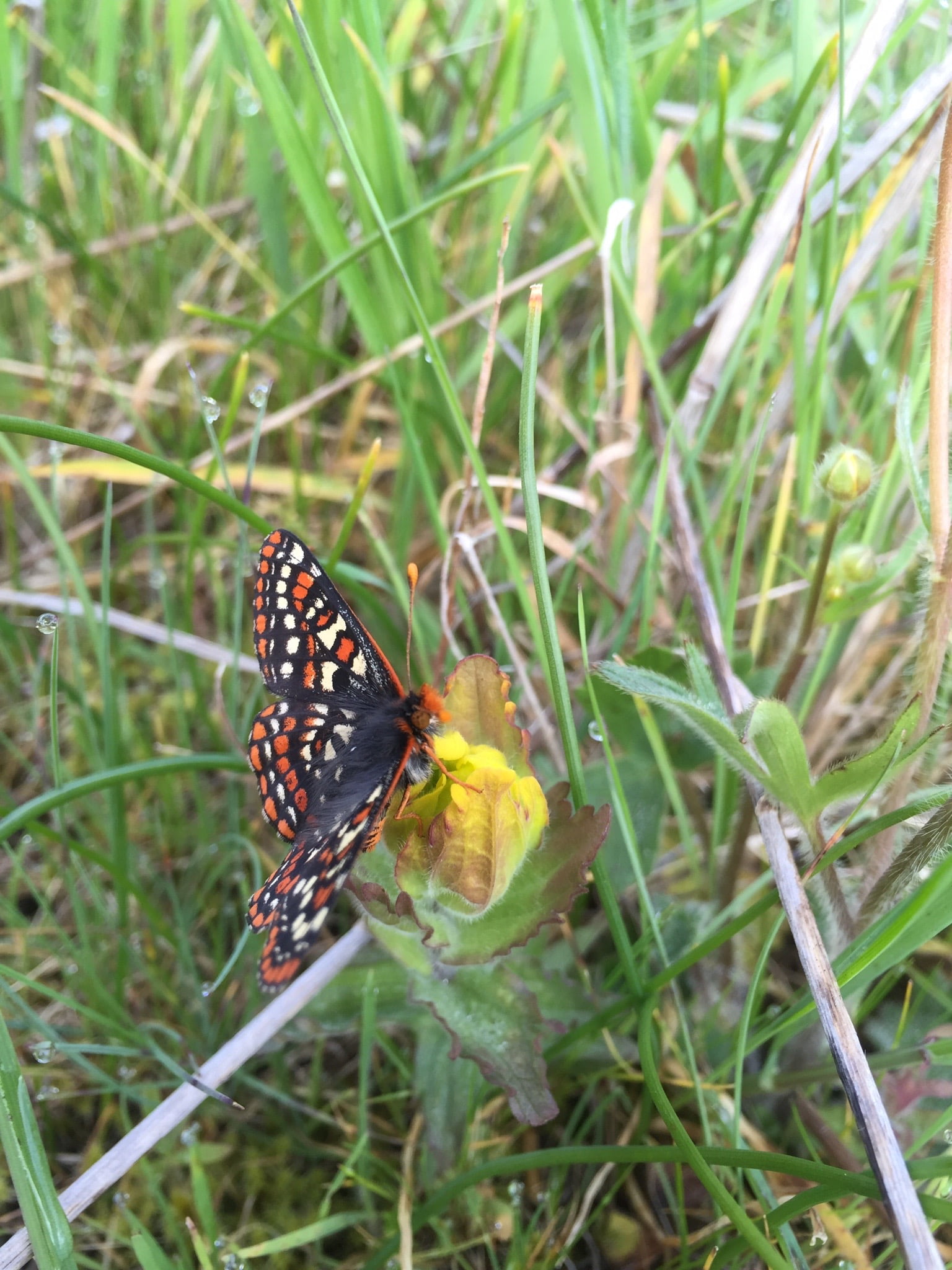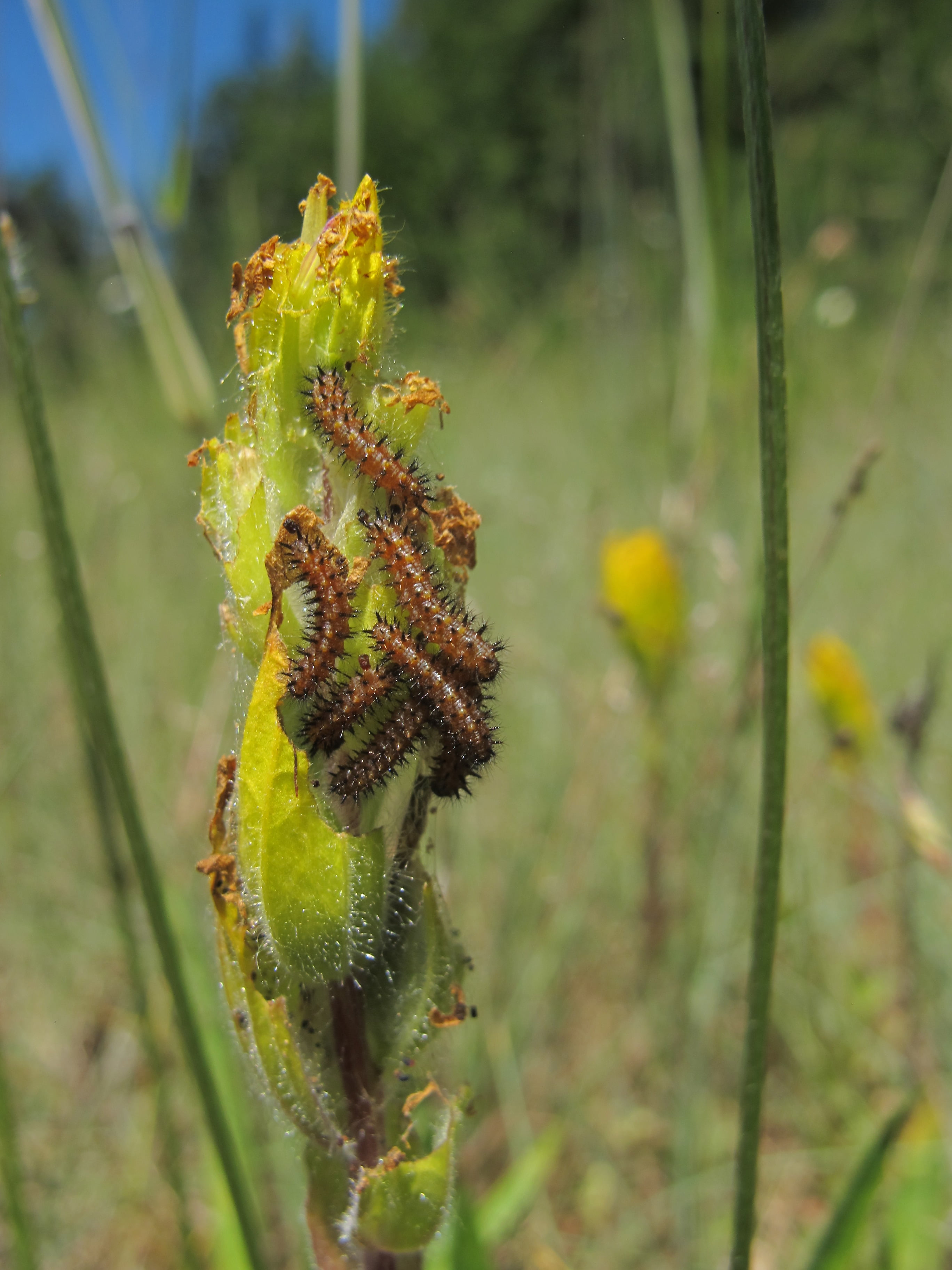
What do Taylor’s checkerspot caterpillars eat?

This has been a boom year for Taylor’s checkerspot, an endangered species in Oregon’s Willamette Valley. The two remaining populations in the state have both shown great numbers – over 1000 butterflies each – and at least some of this appears to be due to strong land stewardship by Benton County Natural Areas and Parks Department. And of course, some may be due to the weather, since the strong population numbers for this species appear to be a regional phenomenon in Washington, too.

Despite a potential boost from the weather, managing habitat for this species can pay big dividends for these imperiled butterflies. Keeping competitive and tall weeds from overrunning the habitats is crucial (source), as is maintaining a diversity of abundant wildflowers that serve as nectar sources.
But what about the plants that the larvae eat? Which plant species can serve as hosts?

It is clear from the remaining wild populations of the butterfly in Oregon, Washington and British Columbia that they often eat harsh paintbrush (Castilleja hispida), but some populations have made a host switch to English plantain (Plantago lanceolata), a weedy invasive plant. Further, at some historic butterfly sites, golden paintbrush (Castilleja levisecta), a threatened species, was present but there are no observations to confirm this plant was a host, although no one was necessarily looking back then and both species may have died out where they co-occurred before biologists could investigate what plants the butterflies were using. Either way, this lack of evidence has left biologists uncertain about the appropriateness of golden paintbrush as a host plant for Taylor’s checkerspot.
But that is changing.

In 2013, Dennis Aubrey, then a graduate student at The Evergreen State College, found that when captive Taylor’s checkerspot females were offered different plants to on which to lay their eggs, they selected paintbrushes over plantains, and they showed no preference between harsh and golden paintbrush (source). Also in that year, IAE ecologists found wild Taylor’s checkerspot larvae feeding on golden paintbrush and English plantain in the middle of winter at an Oregon site where the paintbrush had been planted (source). This observation confirmed that the caterpillars could find golden paintbrush and that the plant was growing enough in winter to be a suitable food source.

But it was not clear that adult Taylor’s checkerspot butterflies would lay eggs on golden paintbrush in spring in the wild, and that the young caterpillars would feed on it. Until spring 2016, that is, when tiny caterpillars were spotted feeding on golden paintbrush at the Beazell Memorial Forest in Benton County. Adult Taylor’s checkerspots laid eggs on golden paintbrush and the caterpillars have grown fast.
Taylor’s checkerspot larvae can use multiple species as host plants, both as young larvae in spring and older larvae in winter. The upshot is that conservation and management of Taylor’s checkerspot and golden paintbrush can be coupled at restoration sites. Conservation measures that benefit golden paintbrush can also improve conditions for Taylor’s checkerspot, creating a win-win for biological diversity.
